
Australia Recommends 2024

Come and Say G'day

G'day, the short film

Discover your Australia

Travel videos

Deals and offers

Australian Capital Territory

New South Wales

Northern Territory

South Australia

Western Australia

External Territories

The Whitsundays

Mornington Peninsula

Port Douglas

Ningaloo Reef

Airlie Beach

Kangaroo Island

Rottnest Island

Hamilton Island

Lord Howe Island

Tiwi Islands

Phillip Island

Bruny Island

Margaret River

Barossa Valley

The Grampians

Hunter Valley

Yarra Valley

McLaren Vale

Glass House Mountains

Alice Springs

Uluru and Kata Tjuta

The Kimberley

Flinders Ranges

Kakadu National Park

Eyre Peninsula

Karijini National Park

Great Barrier Reef

Blue Mountains

Daintree Rainforest

Great Ocean Road

Purnululu National Park

Cradle Mountain-Lake St Clair National Park

Litchfield National Park

Aboriginal experiences

Arts and culture

Festivals and events

Food and drink

Adventure and sports

Walks and hikes

Road trips and drives

Beaches and islands

Nature and national parks

Eco-friendly travel

Health and wellness

Family travel

Family destinations

Family road trips

Backpacking

Work and holiday

Beginner's guide

Accessible travel

Planning tips

Trip planner

Australian budget guide

Itinerary planner

Find a travel agent

Find accommodation

Find transport

Visitor information centres
Deals and travel packages

Visa and entry requirements FAQ

Customs and biosecurity

Working Holiday Maker visas

Facts about Australia

Experiences that will make you feel like an Aussie

People and culture

Health and safety FAQ

Cities, states & territories

Iconic places and attractions

When is the best time to visit Australia?

Seasonal travel

Events and festivals

School holidays

Public holidays
How to get to Australia's most iconic cities

How long do I need for my trip to Australia?

How to travel around Australia

Guide to driving in Australia

How to hire a car or campervan

How to plan a family road trip

How to plan an outback road trip

- Australian visa information
- Working holiday visas

Sydney Airport, New South Wales © Sydney Airport

Australian Visa and Entry Requirements FAQs
Learn about visa requirements for entry to Australia for tourism purposes with this list of frequently asked questions.
Please note this page is intended to provide general information only and does not constitute legal advice. Tourism Australia is not the Australian government visa granting authority. For information on visas to enter Australia, visitors should seek the most up-to-date information from Australian Government Department of Home Affairs .*
Ready to plan your trip? We're ready to welcome you! Here are some helpful tips for getting your visa sorted:
- Be sure to secure the appropriate visa before travelling to Australia. Use the Visa Finder to explore your options.
- Ensure all details are correct and provide all required documents when you apply. An incomplete or incorrect application can delay your visa.
- Submitting multiple applications at the same time can slow the process. For visitor visas, submit one application per person, including children.
- Questions? The Australian Government's Global Service Centre can help.
Australian Visa Information
Unless you are an Australian citizen, you will need a valid Australian visa to enter the country. New Zealand passport holders can apply for a visa upon arrival in the country. All other passport holders, regardless of age, must apply for a visa before leaving home. You can apply for a range of Australian visa types, including tourist visas and working holiday visas, via the ETA app or on the Department of Home Affairs website.
There are different Australian visa types available for travellers to Australia. Knowing which Australian visa to apply for depends on the length of your stay, your passport and the purpose of your visit. You’ll also need to meet certain financial and medical requirements, be outside of Australia when applying and maintain health insurance for the duration of your stay.
Electronic Travel Authority visa (subclass 601) This visa allows you to visit Australia as many times as you want, for up to a year, and stay for three months each visit. This visa is available to passport holders from a number of countries and regions, who live outside Australia. A step-by-step guide on how to apply is here .
All ETA-eligible passport holders must apply for an ETA using the Australian ETA app. Agents can assist you in the application process, but you must be physically present as a live facial image is required.
eVisitor (subclass 651) This is a free visa for multiple visits to Australia for tourism or business purposes for up to three months at a time within a 12-month period. This visa is available to passport holders from a number of European countries and it cannot be extended.
Visitor visa (subclass 600) The Visitor visa allows you to visit Australia, either for tourism or business purposes. It is open to all nationalities. Generally, a period of stay of up to three months is granted, but up to 12 months may be granted in certain circumstances. Applicants will have to pay a fee to submit their application.
The application process may differ depending on which visa you need.
You can only apply for the Electronic Travel Authority visa (subclass 601) through the Australian ETA app. A step-by-step guide on how to apply is located here .
For other visas, you can apply online by creating an ImmiAccount and completing the application process. Be sure to submit your application well in advance of your travel date to allow enough time for processing. You may be asked to provide further supporting information. You will be notified in writing if your tourist visa is approved and it will be digitally linked to your passport. For more information on different visa types, and Australian visa requirements including how to apply for an Australian visa, visit the Department of Home Affairs website.
If you are already in Australia and hold a valid Electronic Travel Authority visa (subclass 601) you can extend your stay by applying for another visa, such as a Visitor visa (subclass 600). An eVisitor (subclass 651) cannot be extended.
See the Department of Home Affairs website for details.
Working Holiday Visas
Australia's Working Holiday Maker program allows visitors aged under 30 (or 35 in certain cases) who hold a passport from a participating country to travel and work in Australia. Working holiday visas are valid for one year, or up to three years if you meet certain conditions.
Find out more about working holiday visas here .
*Australian visa regulations (including visa application charges) change from time to time. The information provided here is valid at the time of publication, but visitors should check this information is still current by visiting the Australian Department of Home Affairs .
More articles like this
We use cookies on this site to enhance your user experience. Find out more . By clicking any link on this page you are giving your consent for us to set cookies.
Acknowledgement of Country

We acknowledge the Traditional Aboriginal and Torres Strait Islander Owners of the land, sea and waters of the Australian continent, and recognise their custodianship of culture and Country for over 60,000 years.
- International (English)
- New Zealand (English)
- Canada (English)
- United Kingdom (English)
- India (English)
- Malaysia (English)
- Singapore (English)
- Indonesia (Bahasa Indonesia)
- Deutschland (Deutsch)
- France (Français)
- Italia (Italiano)
- 中国大陆 (简体中文)
*Product Disclaimer: Tourism Australia is not the owner, operator, advertiser or promoter of the listed products and services. Information on listed products and services, including Covid-safe accreditations, are provided by the third-party operator on their website or as published on Australian Tourism Data Warehouse where applicable. Rates are indicative based on the minimum and maximum available prices of products and services. Please visit the operator’s website for further information. All prices quoted are in Australian dollars (AUD). Tourism Australia makes no representations whatsoever about any other websites which you may access through its websites such as australia.com. Some websites which are linked to the Tourism Australia website are independent from Tourism Australia and are not under the control of Tourism Australia. Tourism Australia does not endorse or accept any responsibility for the use of websites which are owned or operated by third parties and makes no representation or warranty in relation to the standard, class or fitness for purpose of any services, nor does it endorse or in any respect warrant any products or services by virtue of any information, material or content linked from or to this site.

Countries, economies and regions
Select a country, economy or region to find embassies, country briefs, economic fact sheets, trade agreements, aid programs, information on sanctions and more.
International relations
Global security.
- Australia and sanctions
- Australian Safeguards and Non-proliferation Office (ASNO)
- Counter-terrorism
- Non-proliferation, disarmament and arms control
- Peacekeeping and peacebuilding
Regional architecture
- Asia Pacific Economic Cooperation (APEC)
- Association of Southeast Asian Nations (ASEAN)
- East Asia Summit (EAS)
- Australia and the Indian Ocean region
- Pacific Islands regional organisations
Global themes
- Child protection
- Climate change
- Cyber affairs and critical technology
- Disability Equity and Rights
- Gender equality
- Human rights
- Indigenous peoples
- People Smuggling, Human Trafficking and Modern Slavery
- Preventing Sexual Exploitation, Abuse and Harassment
- Australia’s treaty-making process
International organisations
- The Commonwealth of Nations
- United Nations (UN)
- World Trade Organization
Foreign Arrangements Scheme
Trade and investment, about free trade agreements (ftas).
- The benefits of FTAs
- How to get free trade agreement tariff cuts
- Look up FTA tariffs and services market access - DFAT FTA Portal
- Discussion paper on potential modernisation – DFAT FTA Portal
About foreign investment
- The benefits of foreign investment
- Investor-state dispute settlement (ISDS)
- Australia's bilateral investment treaties
- Australia's foreign investment policy
For Australian business
- Addressing non-tariff trade barriers
Expo 2025 Osaka, Kansai
Stakeholder engagement.
- Ministerial Council on Trade and Investment
- Trade 2040 Taskforce
- First Nations trade
Australia's free trade agreements (FTAs)
- ASEAN-Australia-New Zealand (AANZFTA)
- Chile (ACLFTA)
- China (ChAFTA)
- Hong Kong ( A-HKFTA & IA)
- India (AI-ECTA)
- Indonesia (IA-CEPA)
- Japan (JAEPA)
- Korea (KAFTA)
- Malaysia (MAFTA)
- New Zealand (ANZCERTA)
- Peru (PAFTA)
- Singapore (SAFTA)
- Thailand (TAFTA)
- United Kingdom (A-UKFTA)
- USA (AUSFTA)
- Trans-Pacific Partnership (TPP)
- European Union (A-EUFTA)
- India (AI-CECA)
- Australia-UAE Comprehensive Economic Partnership Agreement
- Australia-Gulf Cooperation Council (GCC)
Trade and investment data, information and publications
- Fact sheets for countries and regions
- Australia's trade balance
- Trade statistics
- Foreign investment statistics
- Trade and investment publications
- Australia's Trade through Time
WTO, G20, OECD, APEC and IPEF and ITAG
Services and digital trade.
- Service trade policy
- Australia-Singapore Digital Economy Agreement
- Digital trade & the digital economy
Development
Australia’s development program, performance assessment.
- Development evaluation
- Budget and statistical information
Who we work with
- Multilateral organisations
- Non-government organisations (NGOs)
- List of Australian accredited non-government organisations (NGOs)
Development topics
- Development issues
- Development sectors
2030 Agenda for Sustainable Development
- Sustainable Development Goals
Where we deliver our Development Program
Humanitarian action.
Where and how Australia provides emergency assistance.
People-to-people
Australia awards.
- Australia Awards Scholarships
- Australia Awards Fellowships
New Colombo Plan
- Scholarship program
- Mobility program
Public diplomacy
- Australian Cultural Diplomacy Grants Program
- Australia now
- UK/Australia Season 2021-22
Foundations, councils and institutes
- Australia-ASEAN Council
- Australia-India Council
- Australia-Indonesia Institute
- Australia-Japan Foundation
- Australia-Korea Foundation
- Council for Australian-Arab Relations (CAAR)
- Council on Australia Latin America Relations (COALAR)
International Labour Mobility
- Pacific Labour Mobility Scheme
- Agriculture Visa
Australian Volunteers Program
Supporting organisations in developing countries by matching them with skilled Australians.
Sports diplomacy
Australia is a successful global leader and innovator in sport.
A global platform for achievement, innovation, collaboration, and cooperation
- About Australia
Australia is a stable, democratic and culturally diverse nation with a highly skilled workforce and one of the strongest performing economies in the world.
Australia in Brief publication
This is the 52nd edition of Australia in Brief, revised and updated in February 2021
Travel advice
To help Australians avoid difficulties overseas, we maintain travel advisories for more than 170 destinations.
- Smartraveller – travel advice
International COVID-19 Vaccination Certificate
Prove your COVID-19 vaccinations when you travel overseas.
- Services Australia
The Australian Passport Office and its agents are committed to providing a secure, efficient and responsive passport service for Australia.
- Australian Passport Office
24-hour consular emergency helpline
- Within Australia: 1300 555 135
- Outside Australia: +61 2 6261 3305
- Getting help overseas
- Visas for Australians travelling overseas
Visas to visit Australia
Whether you are visiting Australia for less than 72 hours or planning on a stay of several years you must have a valid Australian visa.
A visa is a form of permission for a non-citizen to enter, transit or remain in a particular country.
Information on visas to Australia can be found at the Department of Home Affairs .
Related links
- Visiting Australia
- Australia.com - official Australian tourism website
Visa Traveler
Exploring the world one country at a time
Australia Visa for Tourists in 2024: A Comprehensive Guide
Updated: February 23, 2024
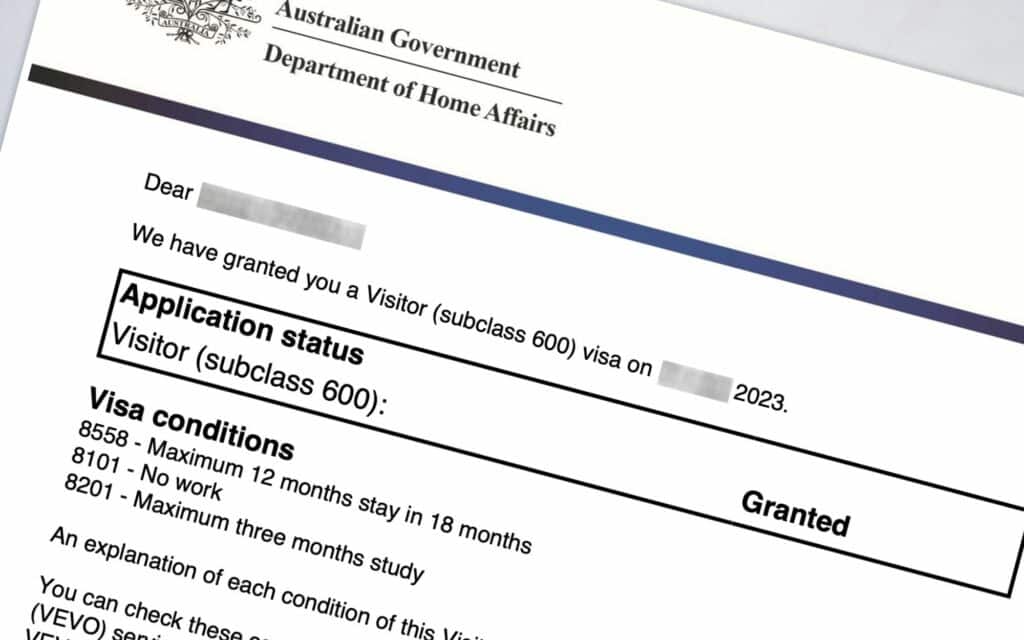
Australia has a complex visa policy, but thankfully visiting Australia as a tourist is quite easy. Australia does not offer visa exemption, so all visitors must obtain a tourist visa. All Australia visa applications are done entirely online.
Quick summary:
- There is no VISA-FREE access to Australia, everyone must hold either an ETA, eVisitor or Visitor visa
- ETA is available to 33 nationalities, costs 20 AUD, approved immediately
- eVisitor visa is available to 36 nationalities, free of cost and approved within a day
- Visitor visa is available to all nationalities, costs 190 AUD, processing takes 1-3 weeks
In this article, I will summarize visa requirements, eligibility, and procedure for the four main ways to visit Australia as a tourist: the ETA, eVisitor, tourist visa, and transit visa.
Table of Contents
Australia visa requirements.
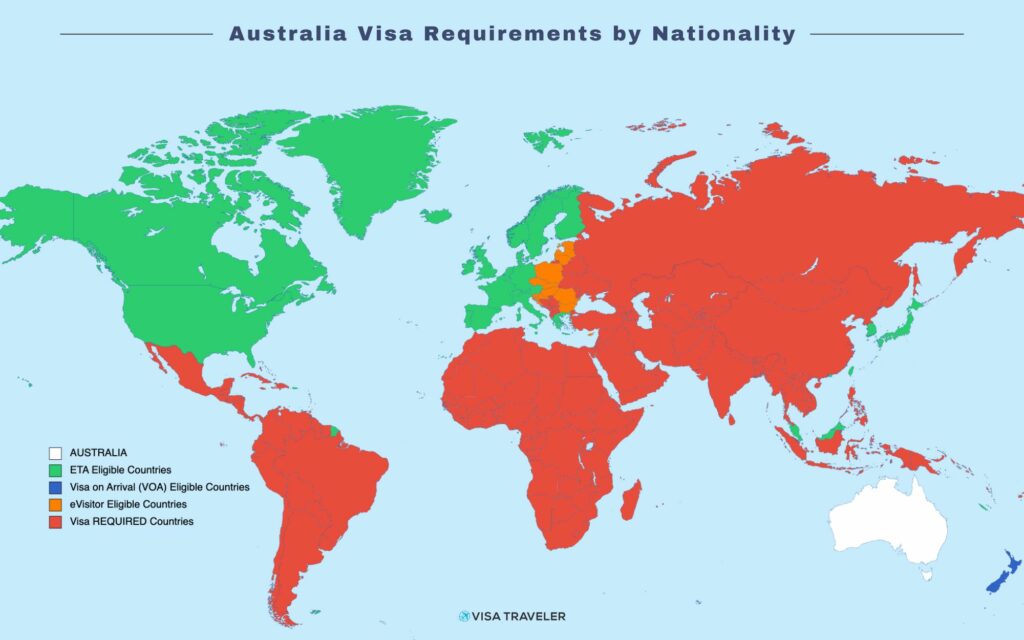
Passport validity required
Your passport must be valid for the entire duration of your stay to enter Australia as a tourist.
Entry requirements
All tourists coming to Australia must meet the following conditions:
- Must be free from any disease or condition that may be a burden to Australia’s healthcare system, such as tuberculosis.
- Must be a genuine visitor and obey the rules and conditions set by the visa.
- Must have a good character and not have a substantial criminal record.
- Must have enough money to finance your stay in Australia.
Visa Policy and Visa Types
Australia does not offer VISA-FREE access to any nationality. You would either need an ETA or a visa. The main tourist visas are summarized in the following table:
According to the Trans-Tasman Travel Agreement, citizens of New Zealand receive a free Special Category Visa (subclass 444) on arrival at any Australian port of entry . This allows them to live and work in Australia indefinitely.
All Australian visas are electronic visas. Visa information is linked to the passport number and verifiable online.
ETA (Electronic Travel Authority, Subclass 601)
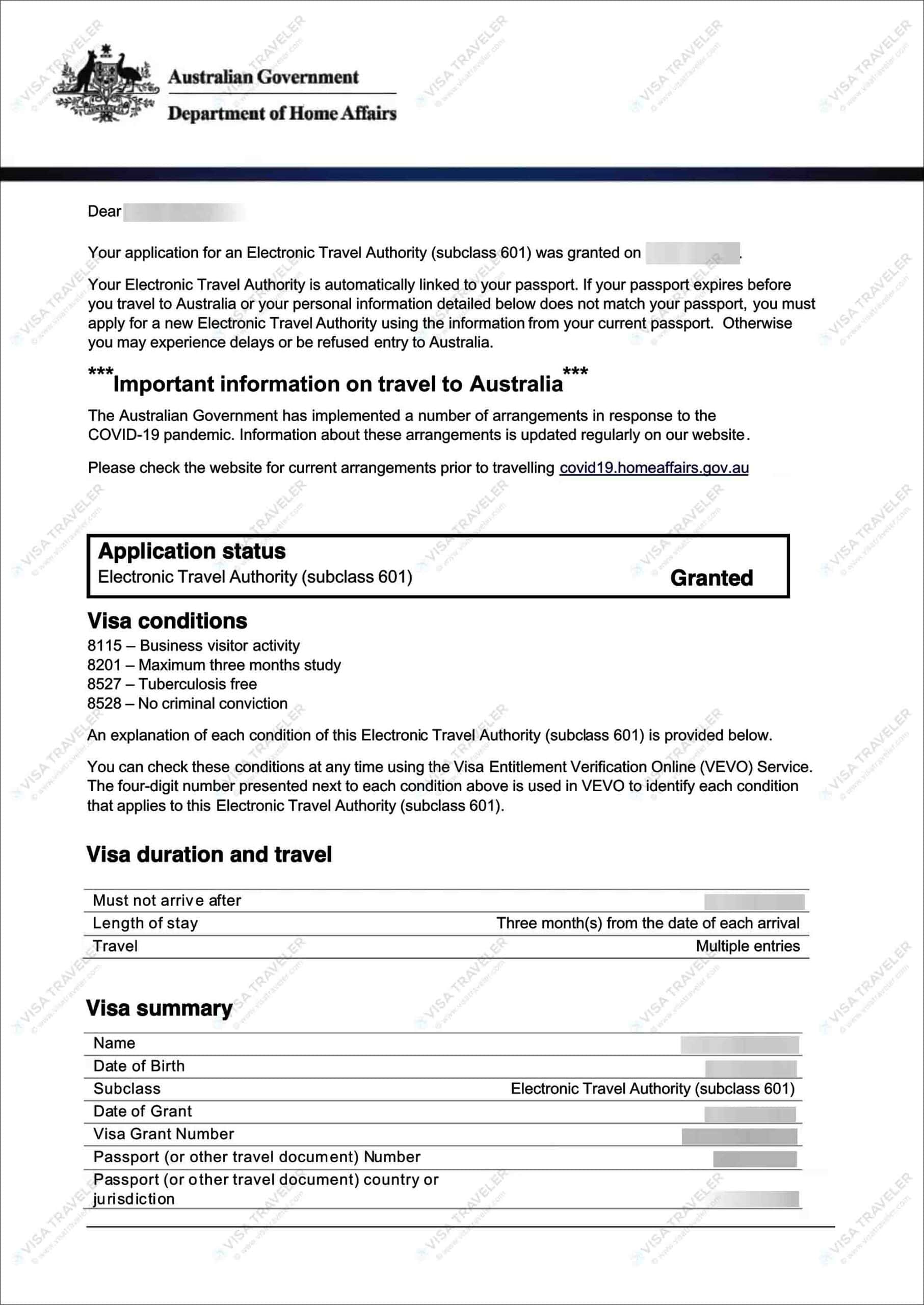
Australia ETA is available to nationals of 33 countries and territories listed below. In most cases, the ETA is approved immediately. For that reason, ETA is often considered a visa exemption or visa waiver.
- Liechtenstein
- Netherlands
- South Korea
- Switzerland
- United Kingdom
- United States of America
- Vatican City
The ETA application is entirely online and can only be applied using the Australian ETA mobile phone app. The app is available as a free download.
There is no charge to apply for ETA, but using the app itself costs a service charge of 20 AUD.
For more information, read the complete guide to Australia Electronic Travel Authority (ETA) for details on eligibility, required documents, the ETA app and the application process.
eVisitor Visa (Subclass 651)
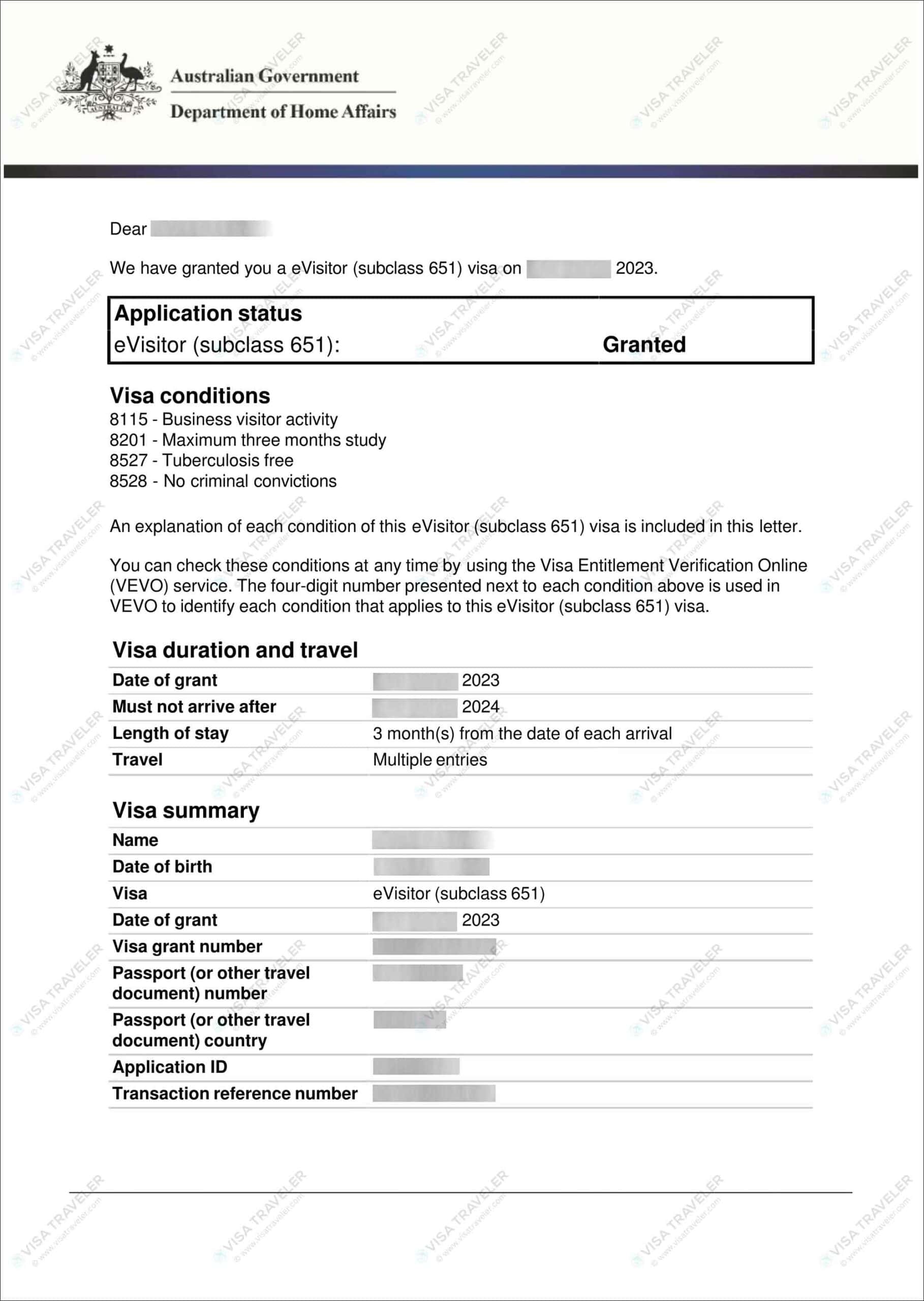
The eVisitor visa is available to nationals of 36 countries exclusively in Europe.
The main difference between the eVisitor visa and the ETA is that the eVisitor requires more documents to be submitted, such as a bank statement as proof of sufficient funds.
Most eVisitor visa applications are processed within a day. There is no fee to apply for an eVisitor visa.
The success rate of the eVisitor visa is 98.5%, even higher than the ETA’s success rate of 97%. This means that if you’re eligible for both the ETA and the eVisitor, you can save 20 AUD by applying for the eVisitor as they are identical in all other aspects.
For more information, read the complete guide to Australia eVisitor Visa for details on eligibility, required documents, the application process and our personal experience.
Visitor Visa (Tourist Stream, Subclass 600)
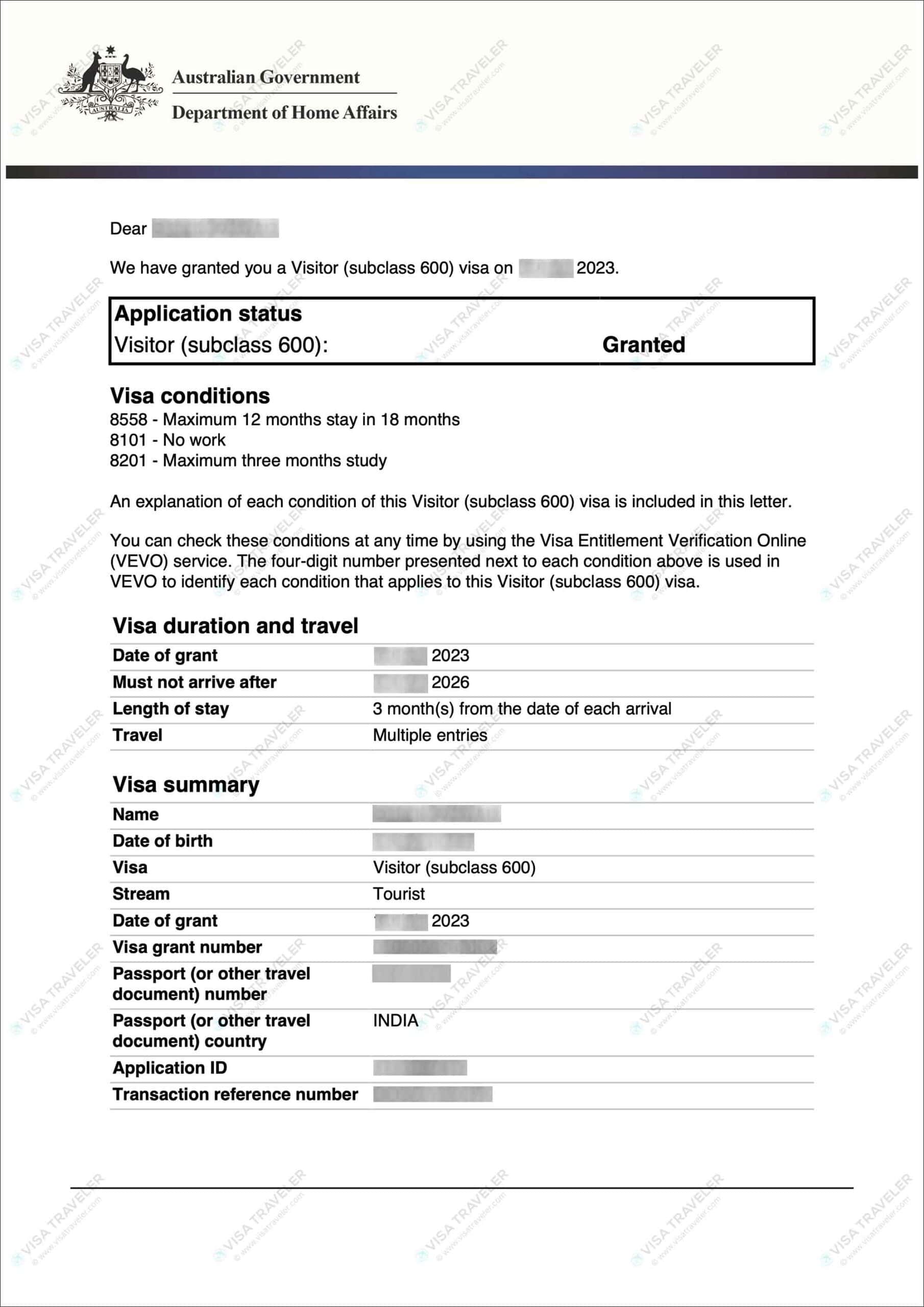
The subclass 600 is Australia’s main tourist visa. It has several streams depending on the purpose such as tourism or business and whether you are applying from outside or within Australia.
For this guide, we will focus on the visitor visa for tourism that can only be applied from outside Australia.
Eligibility, validity and duration of stay
Visitor visas for tourism are available to all nationalities.
Australia issues only eVisas. Therefore, the tourist visa is also an eVisa. The visa will be electronically linked to your passport. You can carry a print of the eVisa with you when you travel.
Visitors visas are either single or multiple-entry valid for up to 3 years. On each visit, you are allowed to stay up to 3 months.
Application process and documentation
Applications for tourist visas can be made online through the ImmiAccount portal.
The documents required for a tourist visa include any of the below. The actual documents required depends on a case-by-case basis.
- Proof of sufficient funds, such as bank statements, pay slips, tax returns, etc.
- Proof of reasons to return home, such as employment letter, property ownership, family dependency, etc.
- Proof of travel history such as previous visas and entry/exit stamps of the countries you have traveled to.
50% of applications get processed within a week and 90% of all applications get processed within 21 days.
The fee for the tourist visa is 190 AUD.
For more information, read the complete guide to Australia Visitor Visa for details on required documents, biometric appointment, application process and our personal experience.
Benefits of an Australian visa
Australian tourist visa not only grants you access to Australia but also to many other countries. As of 2024, you can travel to 16 countries with an Australian visa. Read this article on VISA-FREE countries for Australian visa to learn how to visit these 16 countries.
Transit Visa (Subclass 771)
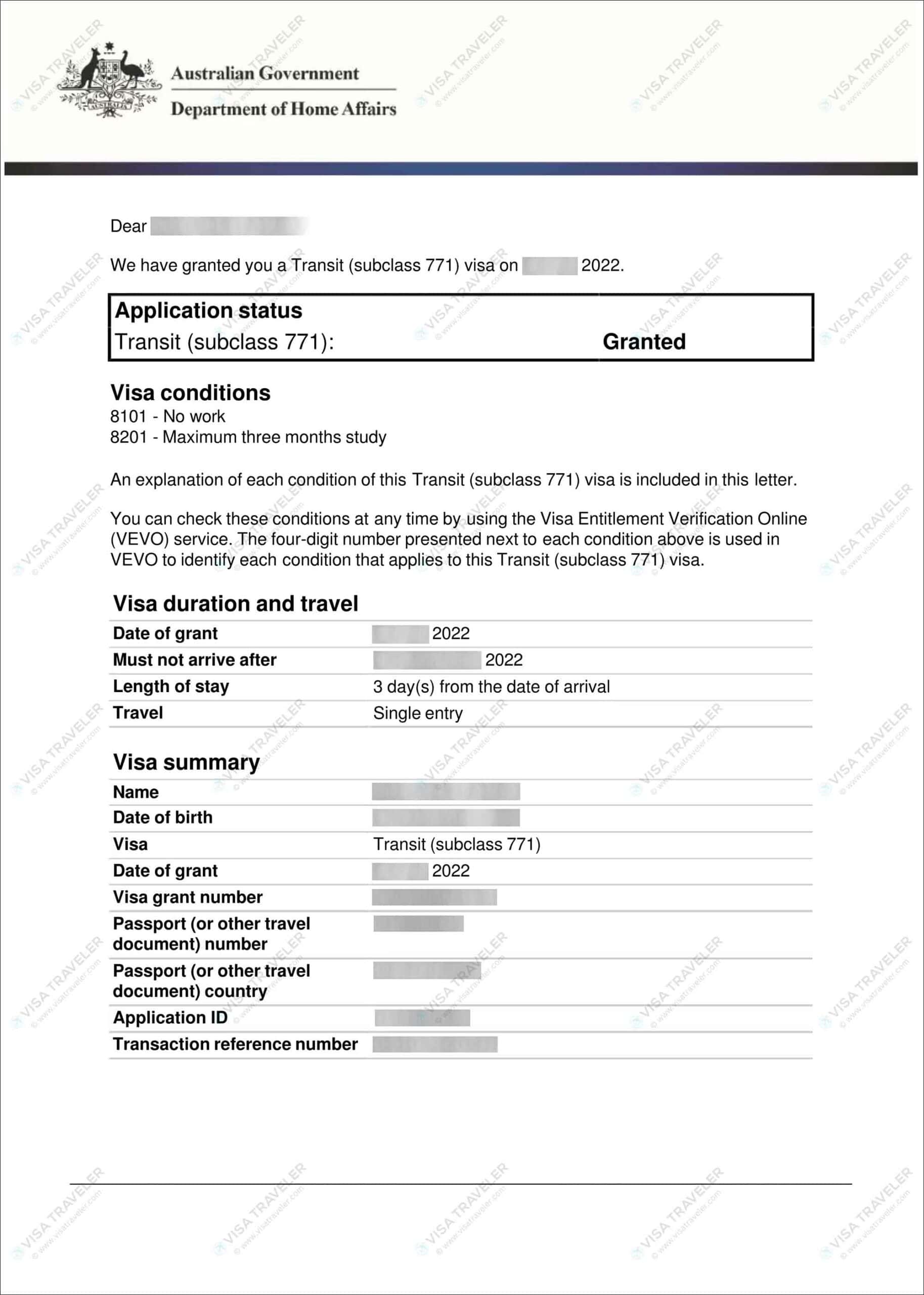
Eligible nationalities can transit without a visa (TWOV) through Australian airports. For TWOV, you must meet the following conditions:
- Stay airside and not clear immigration
- Have your onward flight within 8 hours of arriving in Australia
- Hold a passport from the following eligible countries
TWOV eligible countries
- Marshall Islands
- New Zealand
- Papua New Guinea
- Philippines
- Solomon Islands
- South Africa
- United Arab Emirates
Transit visa requirements
If you already hold an ETA, eVistor or Visitor visa, then you do not need a transit visa. Rest must obtain a transit visa (subclass 771). The transit visa allows entry into Australia for short stays of up to 72 hours.
To apply for a transit visa, you must have a confirmed onward ticket to another country within 72 hours of arrival and the required visas for it. In addition to those, you may also require proof of adequate health insurance.
For more information, read the complete guide to Australia Transit Visa for details on the application process, required documents, fees and transit procedure at the airport.
Visa Extension
Extensions are not allowed for any of the Australian tourist visas. You are allowed to apply for another visa while you are in Australia, such as the Visitor Visa (Onshore stream).
Certain conditions attached to your current visa may prevent you from applying for another visa while in Australia. The most notable one is Condition 8503: No further stay.
When applying for a new visa from within the country, a Bridging Visa is automatically applied for you. A Bridging Visa will keep your stay lawful while waiting for your new visa to be approved.
As a tourist, you will receive a Bridging Visa A (BVA) while you are waiting for your new visa. BVA expires if you leave Australia.
For more information, read the article on Australia Visa Extension for details on rules, conditions and procedures to extend your stay in Australia.
Entry and Exit Procedures
Australia has one of the most streamlined entry procedures in the world. Passports are not stamped on entry or exit.
If eligible to use SmartGates, you can process your entry and exit without even speaking to a border official.
SmartGates eligibility
To use SmartGates at Australian airports, your passport must be an ePassport from one of the following countries.
You must check your eligibility to use SmartGates at the kiosks just before the gates. If eligible, you will be given a ticket. Then you must proceed to the SmartGates and follow the procedure.
If not eligible, you will be directed to a border officer.
Other passports
All other passport holders must proceed to an immigration officer box. Answer any questions about your stay and intentions.
Your passport will not be stamped. But if you need evidence of entry, you can request a stamp.
Incoming Passenger Card (IPC)
All arriving passengers must complete and present a paper arrival card called Incoming Passenger Card (IPC). You will be given one on your flight to Australia.
Pay attention to the items you must declare. Australia has stringent biosecurity protocols and failure to declare even harmless items, may lead to fines and severe penalties.
Frequently Asked Questions (FAQs)
Can i stay in australia for 6 months as a tourist.
The eVisitor, ETA, and most Tourist Visas allow stays of up to 90 days at a time. You need to explicitly apply for a 6-month Tourist Visa to stay in Australia that long.
How many times can you enter Australia on a tourist visa?
The eVisitor and the ETA allow unlimited entries into Australia. Regular tourist visas can be either one or multiple entries.
How much bank balance is required for an Australia tourist visa?
Australian Immigration does not specify a minimum and it will depend on the length of your trip. A good rule of thumb is to have at least 4000 AUD per month of intended stay.
How long do you have to leave Australia for before returning?
There is no minimum time outside of Australia required. As long as you have a valid visa, you can go back whenever you want.
WRITTEN BY THIRUMAL MOTATI

Thirumal Motati is an expert in tourist visa matters. He has been traveling the world on tourist visas for more than a decade. With his expertise, he has obtained several tourist visas, including the most strenuous ones such as the US, UK, Canada, and Schengen, some of which were granted multiple times. He has also set foot inside US consulates on numerous occasions. Mr. Motati has uncovered the secrets to successful visa applications. His guidance has enabled countless individuals to obtain their visas and fulfill their travel dreams. His statements have been mentioned in publications like Yahoo, BBC, The Hindu, and Travel Zoo.
PLAN YOUR TRAVEL WITH VISA TRAVELER
I highly recommend using these websites to plan your trip. I use these websites myself to apply for my visas, book my flights and hotels and purchase my travel insurance.
01. Apply for your visa
Get a verifiable flight itinerary for your visa application from DummyTicket247 . DummyTicket247 is a flight search engine to search and book flight itineraries for visas instantly. These flight itineraries are guaranteed to be valid for 2 weeks and work for all visa applications.
02. Book your fight
Find the cheapest flight tickets using Skyscanner . Skyscanner includes all budget airlines and you are guaranteed to find the cheapest flight to your destination.
03. Book your hotel
Book your hotel from Booking.com . Booking.com has pretty much every hotel, hostel and guesthouse from every destination.
04. Get your onward ticket
If traveling on a one-way ticket, use BestOnwardTicket to get proof of onward ticket for just $12, valid for 48 hours.
05. Purchase your insurance
Purchase travel medical insurance for your trip from SafetyWing . Insurance from SafetyWing covers COVID-19 and also comes with a visa letter which you can use for your visas.
Need more? Check out my travel resources page for the best websites to plan your trip.
LEGAL DISCLAIMER We are not affiliated with immigration, embassies or governments of any country. The content in this article is for educational and general informational purposes only, and shall not be understood or construed as, visa, immigration or legal advice. Your use of information provided in this article is solely at your own risk and you expressly agree not to rely upon any information contained in this article as a substitute for professional visa or immigration advice. Under no circumstance shall be held liable or responsible for any errors or omissions in this article or for any damage you may suffer in respect to any actions taken or not taken based on any or all of the information in this article. Please refer to our full disclaimer for further information.
AFFILIATE DISCLOSURE This post may contain affiliate links, which means we may receive a commission, at no extra cost to you, if you make a purchase through a link. Please refer to our full disclosure for further information.
MORE VISA GUIDES

UNITED KINGDOM

VIEW ALL VISA GUIDES
- Cookie Policy
- Copyright Notice
- Privacy Policy
- Terms of Use
- Flight Itinerary
- Hotel Reservation
- Travel Insurance
- Onward Ticket
- Testimonials
Search this site
Visa requirements
Health requirements and panel physicians.
Australia enjoys some of the best health standards in the world. To maintain these standards, most visa applicants are required to meet certain minimum health standards in order to be granted a visa. We refer to this as meeting 'the health requirement'.
For information on meeting the health requirement visit the Department of Home Affairs website .
See the department's list of office locations to find information on panel physicians in your location that have been approved to perform medical examinations on visa applicants outside Australia.
Character requirements
Everyone who wants to enter Australia must be of good character and will be assessed against the character requirements. Applicants must declare all recorded offences to us. If you do not declare an offence and we become aware of this it might have a negative impact on your application.
For information on how character is assessed, visit the Department of Home Affairs website .
If requested, you must provide a police certificate from each country where you have lived for a total of 12 months or more in the last 10 years, since turning 16 years of age.
Applicants currently living in the United States may be requested to obtain both a State-wide police clearance from each State of residence in the USA during the last 12 months AND an FBI clearance in their current name and any other name they are known by or have previously been known by.
If applicable, you must also provide:
- court papers listing the outcomes and dispositions of any charges listed on the FBI clearance, US State police clearance, or other police certificates/clearances
- any document(s) associated with your arrest, time served and release documents
- a written statement from you detailing each arrest/offence/conviction.
Obtaining an FBI clearance (US citizens and permanent residents)
US citizens and permanent residents can apply directly to the FBI or to one of four department approved channelers listed below to obtain an Identity History Summary Check.
Approved channelers:
- Accurate Biometrics
- National Credit Reporting
- National Background Check Inc
- Telos Identity Management Solutions
Obtaining an FBI clearance (US temporary residents and visitors)
US temporary residents and visitors can apply directly to the FBI to obtain an Identity History Summary Check.
Obtaining a state police clearance
Apply to the relevant state police department. Please ensure the clearance is requested for all names you have been known by.
The type of certificate issued depends on individual state procedures.
The Australian Government has incorporated the collection of biometrics into the visa application process outside Australia.
Applicants lodging visa applications in selected locations, regardless of nationality, may be requested to attend an AVAC or an ABCC in person to lodge their application and/or provide their biometrics.
For more information on biometrics and collection of biometrics, visit the Department of Home Affairs website .
How and When to Get a Visa to Visit Australia

Update: Some offers mentioned below are no longer available. View the current offers here .
US citizens can travel to many countries visa-free, but Australia isn't one of them. If you're thinking about traveling to Australia, you'll need to plan ahead and obtain valid travel documentation. Here's what you need to know before traveling to Australia as a US citizen with a US passport.
What Visa Do I Need?
The Australian government makes it easy to determine the visa you need with its Visa Finder website . This website asks three questions, the first of which is about the purpose of your trip (think: vacation, visiting relations, attending an event, doing business and seeking medical treatment, among others):
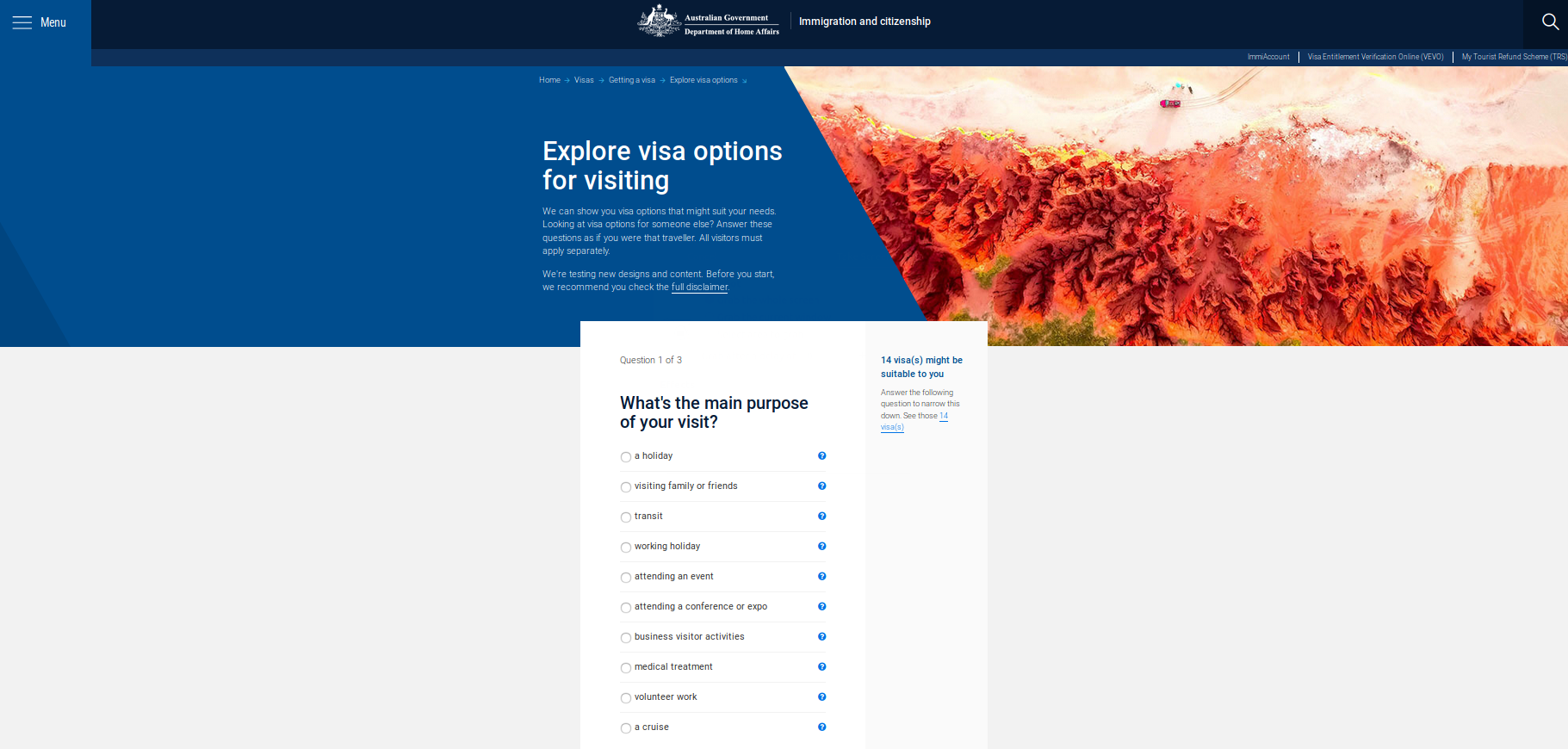
The next question asks the country of your passport:
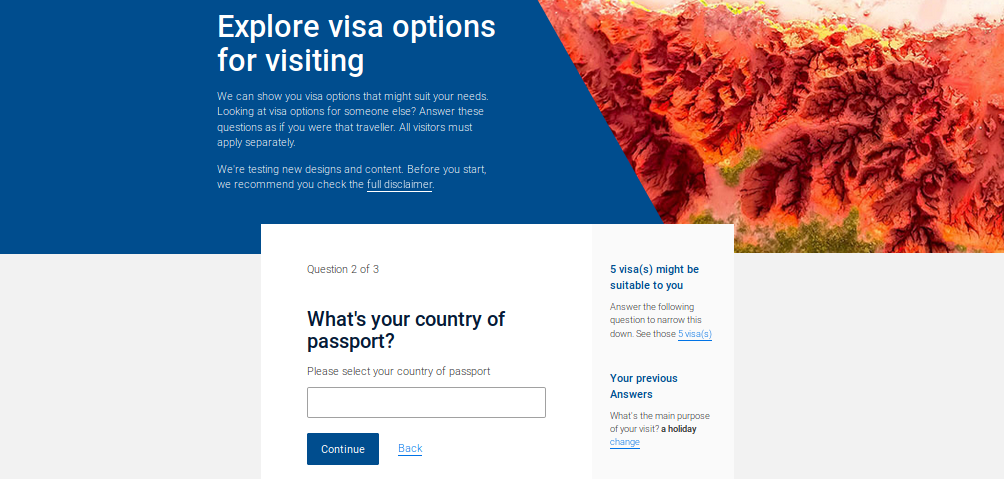
And the final question asks how long you'd like to stay in Australia — either less than or more than three months.
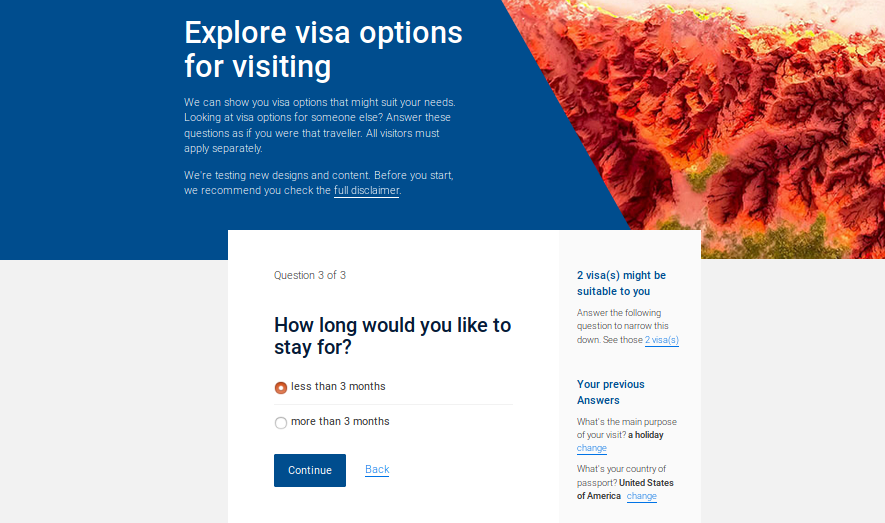
Most travelers from the US will likely be eligible for an Electronic Travel Authority (Subclass 601) — also called an ETA — as I was for my most recent month-long trip.
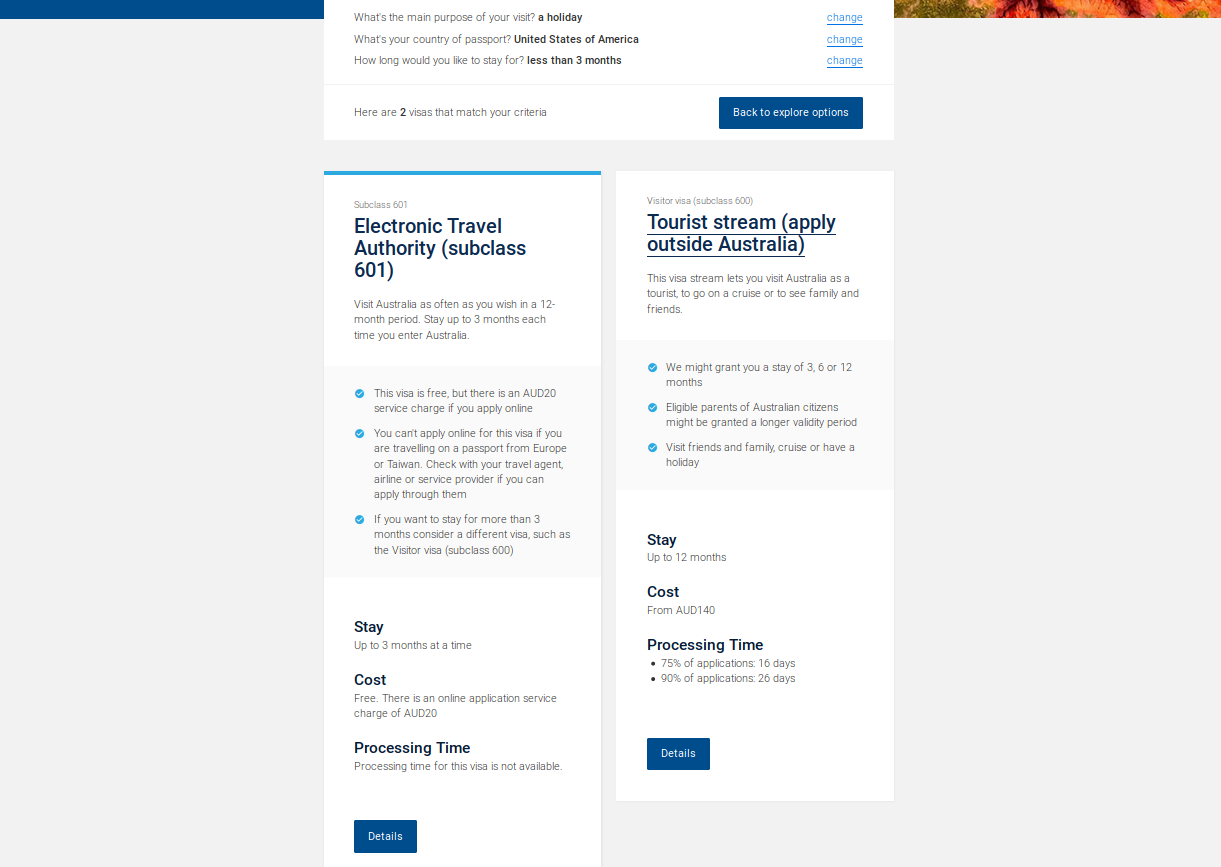
This is because an ETA is available to US citizens visiting Australia for three months for reasons that fit into the following categories:
- Holiday or vacation
- Visit to see friends or family
- Select business activities such as general business or employment inquiries; investigate, negotiate, sign or review a business contract; or attend a conference, trade fair or seminar
Since most US citizens traveling to Australia will be traveling for one of these reasons (and, as a result, are eligible to apply for an ETA) I'll focus on ETAs available to US citizens with a US passport.
What Are the Requirements?
To apply for an ETA, you must:
- Have a valid passport from an eligible country (including the US).
- Apply while outside Australia.
- Wish to stay no longer than three months at a time (you must not study for more than three months, for example).
- Be free from tuberculosis.
- Not have any criminal convictions for which you have been sentenced for a total combined period of 12 months or more, whether or not you served the sentence(s).
- Have paid back any debt — of either yourself or your family — or arranged to pay back any debt to the Australian government.

How Much Does It Cost to Apply Online?
The ETA is free, but there is an online application service charge of 20 Australian dollars (about $14) per applicant. As US passport holders -- along with seven other nationalities -- must apply online, there's no escaping the online application service charge. The fees for my recent ETA applications coded as "Bills and Utilities" on my Chase Sapphire Reserve statement, so don't expect the fee to code as "Travel."

How Long Does It Take?
The Australian government says "processing time for this visa is not available" and that the visa may take longer to process if:
- You don't fill it out correctly
- It takes the Australian government additional time to verify your information
Most ETA applications are approved immediately, and those that need additional processing are usually handled within 24 hours. This being said, the Australian government recommends travelers get an approved ETA before booking any nonrefundable travel. Once an ETA is granted, it is valid for one year and allows multiple entries up to three months each.
How Do I Apply?
The online ETA application takes about five minutes to complete. To start an application, click "Apply for an ETA."
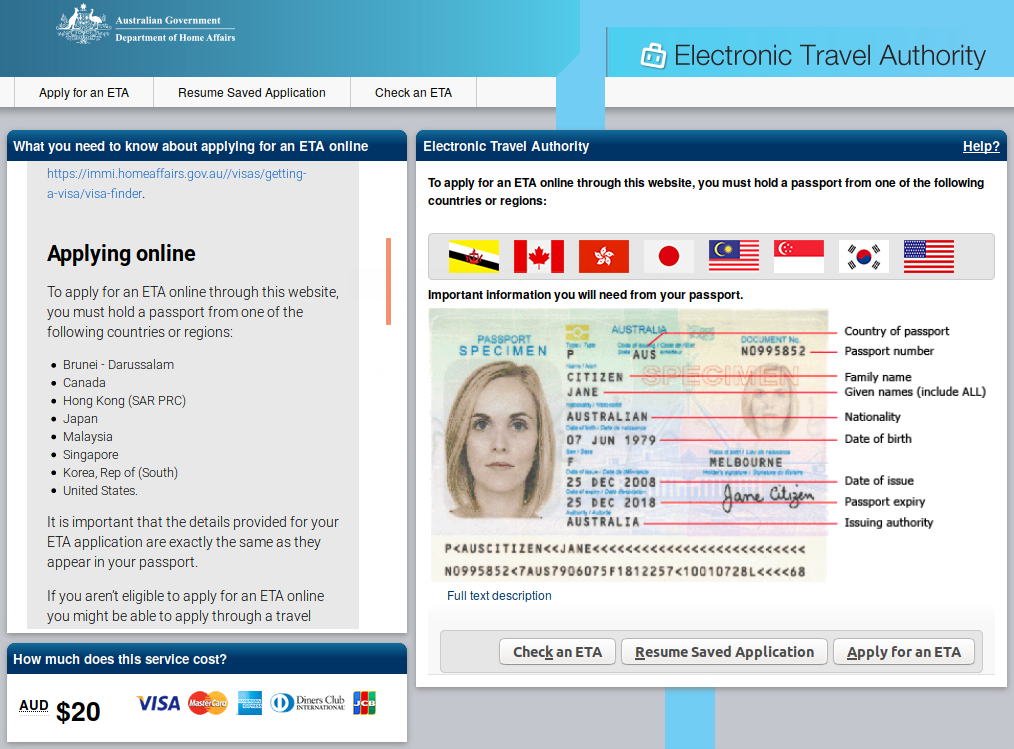
Step 1 : Select whether you need a Tourist ETA or a Business Visitor ETA, and certify that you are currently located outside Australia.
Step 2 : Enter your personal details, whether you have an alias, answer a question about your criminal record and enter your passport information.
Step 3 : Enter your address, phone number and email. Select whether you wish to receive communications by SMS and declare whether you hold any passports issued by other countries.
Step 4 : Confirm your information.
Step 5 : Pay the online service charge of 20 Australian dollars (about $14) using a credit card.
How Do I Check My Status?
Once you have submitted an online ETA application, you'll receive a response. The response may:
- Notify you that your ETA has been granted.
- Advise you that your application has been referred for further assessment. You can then check the status of your application after 12 hours by logging back into the ETA system and selecting the option "Check an ETA."
- Advise you to contact the nearest Australian visa office to make a new application.
My response came immediately in an email titled, "ETA Application for Australia [CLIENT-IN-CONFIDENCE] (PROD)" that confirmed my application had "been successful," my payment had been received, that I was now the proud holder of a "valid ETA for Australia" and that my ETA had been linked to my passport, so no additional documents would be required during the travel process.

What Do I Need to Print Before Travel?
Nothing. When your ETA is linked to your passport, it becomes available to both airline representatives as well as Australian immigration authorities. So, there's no need to print your confirmation once your ETA has been granted.
Other Questions
If you have other questions about ETAs, or other types of Australian visas, take a look at the Australian government's Visa Finder website . Questions such as how to combine multiple visa types if the purpose of your trip changes and what to do if you get a new passport are covered on the website.
Traveling to Australia soon? Here are some TPG articles that might be helpful:
- The Best Ways to Use Points and Miles to Fly from the US to Australia
- TPG Readers Reveal Their Favorite Points Hotels in Australia
- TPG Readers' Best Tips for Flying Around Australia
- 8 Australian Islands You Probably Haven't Heard of But Need to Visit
We’re sorry, this site is currently experiencing technical difficulties. Please try again in a few moments. Exception: request blocked

- Sponsored Visa Application Services
- Employer Sponsored Visas
- Sponsorship Obligations
- Human Resources & Recruitment Support
- Auditing & Compliance
- Appealing an Employer Sponsored Visa Decision
- Personal Visa Application Services
- Skilled Visas
- Partner Visas
- Family Visas
Tourist Visas
- Temporary Activity Visa
- Business Visas
- Refugee, Humanitarian and Protection Visas
- Bridging Visas
- Student Visas
- Appealing a Personal Visa Decision
- Applying for Australian Citizenship
- Section 501 Visa Cancellation
- Section 116 Visa Cancellation
- Immigration Detention
- Administrative Appeals Tribunal (AAT)
- Immigration Assessment Authority (IAA)
- Court Appeals
- Ministerial Intervention
Corporate Immigration
Personal immigration, visa cancellations, visa appeals.
- Recognition
- The Bridge Project
- Blogs and Case Studies
Start typing and press enter to search

- Australian Citizenship
There are several types of Tourist Visa which allow people to visit Australia temporarily for different purposes.
What australian tourist visas are available.
The main types of tourist visas available are:
- Visitor visa – Subclass 600: this visa has several streams under which you could apply, and there are options to apply from outside or inside Australia. This visa can also be granted for a period longer than 3 months. Streams include the tourist stream, sponsored family stream, business visitor stream, and the approved destination status and frequent traveller streams available for citizens of China in some circumstances.
- Electronic Travel Authority – subclass 601: this is a travel authority available for citizens from a specific list of countries that allows the holder to travel to Australia as many times as they want within a 12 month period, for maximum 3 months at a time.
- eVisitor visa – subclass 651: a visa available to citizens of a specified list of countries. Similar to the ETA subclass 601, it allows the holder to travel to Australia multiple times within a 12 month period for three months at a time. This visa is free to apply for and can be done online.
- Working Holiday visa – Subclass 417: A visa available for 18 to 30-year-old citizens of specified nationalities allowing you to work and holiday in Australia (note: the eligible list of countries differs from the subclass 462). If you meet certain requirements of working in a regional area while in Australia on your first 417 visa, you may be eligible to further stays under a second and third working holiday visas.
- Work and Holiday visa – Subclass 462: A visa available for 18 to 30-year-old citizens of specified nationalities allowing you to work and holiday in Australia. If you meet certain requirements of working in a regional area while in Australia on your first 462 visa, you may be eligible to further stays under a second and third work and holiday visas.
What are the eligibility requirements for a tourist visa?
Some general criteria common to the above visas include:
- You must be a genuine visitor to Australia;
- Have a certain passport for all except the 600 visa;
- Have sufficient funds to support your stay in Australia; and
- Meet health and character requirements
For working holiday visas (subclasses 417 and 462), you will also need meet further requirements such as:
- Your age – between 18-30 years old when making your application for the first visa, or up to 35 for Canadian, French and Irish citizens for the 417 visa;
- Minimum education requirements (subclass 462);
- English language requirements (subclass 462);
- You must also not have previously entered Australia on a 417 or 462 visa.
My tourist visa has been cancelled. Can I appeal the decision?
If your tourist visa has been cancelled, in some cases it may be possible to have this decision reviewed by the Administrative Appeals Tribunal. There are strict deadlines and time limits for lodging an application for review, and recommended that you seek advice as soon as possible.
If you have questions about your tourist visa, download our free Tourist Visa Factsheet.
An experienced migration lawyer can make all the difference when you need., latest resources.

The subclass 482 ‘Genuine Position Requirement’

What is the Australian Market Salary Rate?

Labour Market Testing
Australian visa changes for 2023-24
From 1 july 2023, several visa changes and opportunities will come into effect. here's what you need to know..

New visa pathways start on 1 July 2023. Source: SBS News / Getty
What visa changes are coming into effect on 1 July?
Citizenship pathway for new zealanders, new visa for pacific migrants, changes to student visas.

Karanbir’s work hours have been cut by half. He’s not alone
Changes for Working Holiday Makers
Changes to the australia-uk working holiday program.
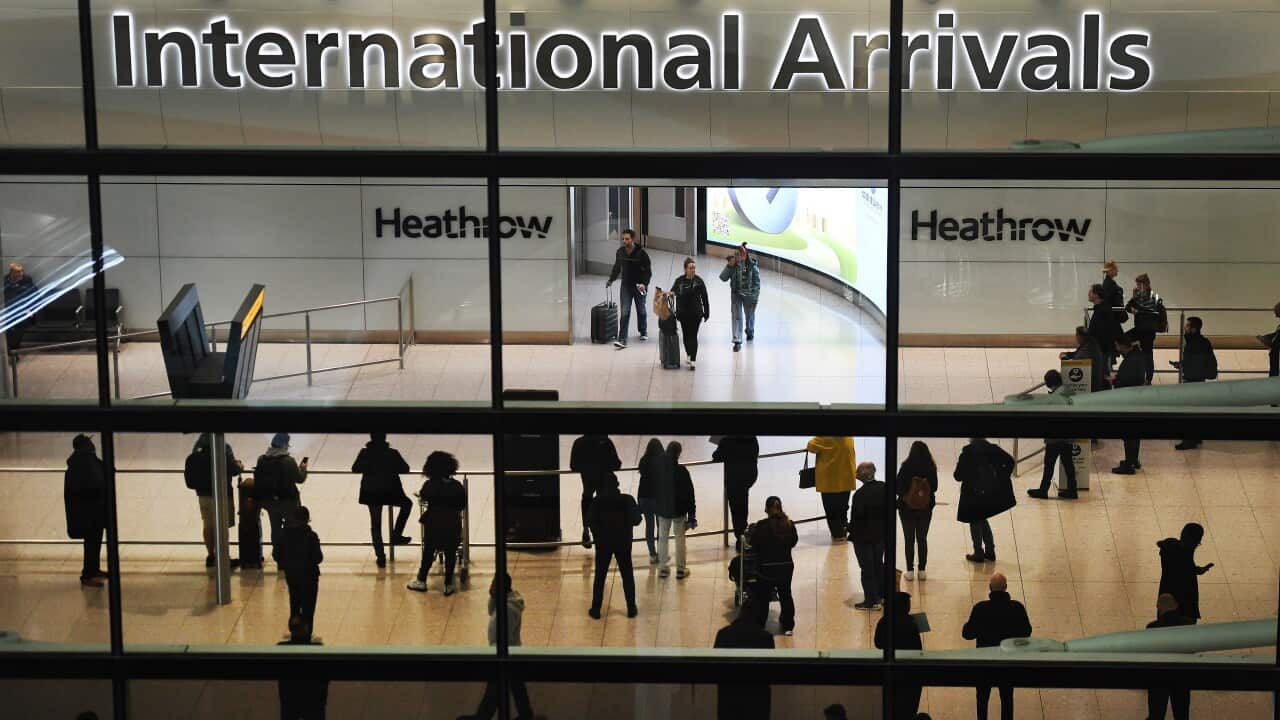
Thinking of working in the UK? The rules for Australians are changing
Visa application costs

Migrants will need to earn more
What other upcoming immigration changes do we know about, skilled workers will have a pathway to permanent residency.

What other immigration changes were announced in the budget?
- More investment

- Skilled migrants prioritised
Visa processing
What else did the migration review recommend.

My grandparents waited six years for a parent visa. Today, they'd wait up to 50
Is Australia welcoming more migrants?

It's been ages since Australia’s borders reopened, so why can't these people leave?
Share this with family and friends
Recommended for you

'Red alert': Heat records were smashed in 2023, and 2024 is likely to be even hotter

Labor's last-minute migration bill has been blocked. Here's what will happen now
Immigration Laws

Climate change study: Australia is in the crucible of slower, longer heatwaves
Climate change

'Ghost colleges' targeted in crackdown on dodgy providers bringing in overseas students
Get sbs news daily and direct to your inbox, sign up now for the latest news from australia and around the world direct to your inbox..
Morning (Mon–Fri)
Afternoon (Mon–Fri)
By subscribing, you agree to SBS’s terms of service and privacy policy including receiving email updates from SBS.
SBS World News
IC Australia | Immigration Consultants of Australia
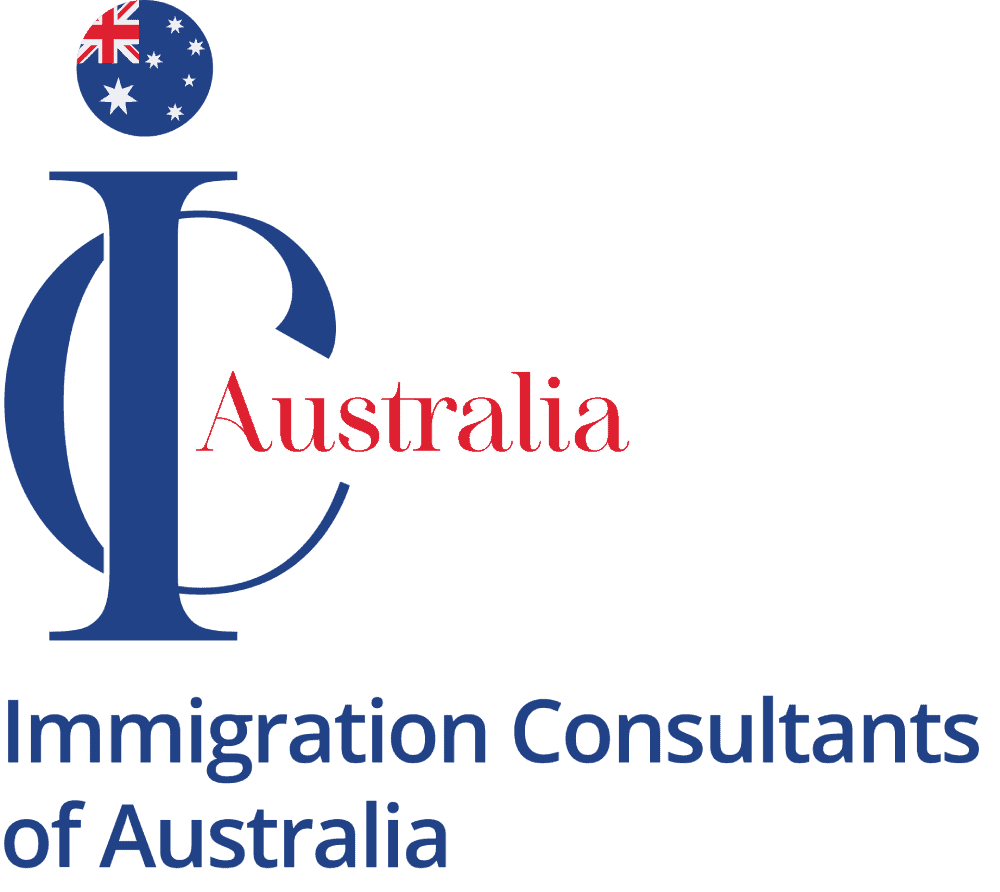
Timeline for Obtaining an Australian Visa: What to Expect

Are you considering a trip Down Under? Planning to work , study , or holiday in Australia? Understanding the visa application process is vital to make sure you experience a smooth journey from the application stage to the final visa approval. In this article, we will guide you through the timeline for obtaining an Australian visa, outlining how long the immigration process to Australia take.
Different types of visas and how long the immigration process to Australia takes
Australia offers a wide range of visas to cater to various purposes, including tourism, work, study, and family migration. Before diving into the visa application process, it’s important to understand the different types of visas available and how long the immigration process to Australia takes for each subclass. Each visa has specific eligibility criteria and requirements, so choosing the right one is crucial. Here are some of the most common types of Australian visas:
Tourist Visa
If you’re planning a short-term visit for holidays, sightseeing, or visiting friends and family, a tourist visa (subclass 600) is the way to go. This visa allows you to stay in Australia for up to three, six, or twelve months, depending on your circumstances.
Skilled Visa
You may be eligible for a skilled visa if you possess certain skills and qualifications that are in demand in Australia. The Skilled Independent visa (subclass 189) and Skilled Nominated visa (subclass 190) are popular options for skilled workers who want to permanently live and work in Australia.
Student Visa
Planning to study in Australia? A student visa (subclass 500) is a must. This visa allows you to enroll in a registered course and stay in Australia for the duration of your study program.
Partner Visa
If you’re in a genuine and ongoing relationship with an Australian citizen, permanent resident, or eligible New Zealand citizen, you may be eligible for a partner visa. This visa allows you to live and work in Australia indefinitely.
Working Holiday Visa
If you’re between 18 and 30 years old and want to explore the Australian way of life while working part-time, a working holiday visa (subclass 417) or work and holiday visa (subclass 462) might be the perfect fit for you.
These are just a few examples of the many visas available. It’s important to identify the visa category that best suits your purpose and circumstances before proceeding with the application process.
Choosing the right visa for your needs and timeframe
Selecting the right visa is essential to ensure a successful application. Consider the purpose of your visit, the duration of your stay, and your future plans in Australia. Here are a few factors to consider when choosing a visa:
Determine the reason for your visit. Are you visiting for tourism, work, study, or to be with a partner or family member? Each visa has specific conditions and requirements related to the purpose of the visit.
Consider the length of time you intend to stay in Australia. Some visas have maximum stay limits, while others allow for longer stays or even permanent residency.
Eligibility
Assess your eligibility based on factors such as age, skills, education, health, and character requirements. Some visas have specific skill or English language proficiency requirements that you need to meet.
Future plans
If you have long-term plans to live, work, or study in Australia, choose a visa that aligns with your future goals. Some visas offer pathways to permanent residency or citizenship, while others are temporary in nature.
It’s always a good idea to seek professional advice from ICAustralia to ensure you choose the right visa for your needs and understand how long immigration to Australia take.
Understanding the application process and how long immigration to Australia takes
Now that you have identified the type of visa you need, it’s time to dive into the visa application process. The process can vary depending on the type of visa and your individual circumstances, but there are some general steps that are common to most visa applications. Let’s take a closer look at the typical visa application process:
Research and gather information
Start by researching the visa requirements, eligibility criteria, and necessary documentation. Familiarize yourself with the application process and any additional steps specific to your chosen visa category.
Complete the application form
Fill out the online application form accurately and provide all the required information. Double-check your entries to avoid any errors or omissions that could delay the processing time.
Prepare supporting documents
Collect and organize all the supporting documents required for your visa application. These may include identification documents, proof of financial capacity, health and character certificates, and any other specific documents relevant to your visa type.
Submit your application
Once you have completed the application form and gathered all the necessary documents, submit your application online through the official Australian Department of Home Affairs website. Pay the applicable visa application fee at this stage.
Biometrics and health checks
Depending on your visa type and country of residence, you may be required to provide biometric data (such as fingerprints) and undergo a health examination. Follow the instructions provided by the Australian Department of Home Affairs regarding these additional requirements.
Visa processing time
After submitting your application, the visa processing time begins. The processing time can vary depending on the visa type, the number of applications being processed, and other factors such as your country of residence. It’s important to note that processing times are estimates and can fluctuate.
Visa decision
Once your application has been processed, you will receive a decision regarding your visa application. If approved, you will be granted a visa, and the details will be provided to you. If there are any issues or additional requirements, you may be contacted by the Department of Home Affairs for further information.
How long does it take to process an Australian visa?
The processing time for an Australian visa can vary depending on several factors, including the type of visa, the number of applications being processed, and your individual circumstances. While the Department of Home Affairs provides estimated processing times, it’s important to note that these are subject to change and should be used as a rough guide. Here are some general estimates for how long immigration to Australia takes:
The processing time for a tourist visa (subclass 600) can range from a few days to a few weeks, depending on the volume of applications received.
The processing time for a student visa (subclass 500) typically takes around four to six weeks, although it may vary depending on factors such as the educational institution and country of residence.
Skilled visas (subclass 189 and 190) generally have longer processing times due to the comprehensive assessment of skills and qualifications. Processing times can range from several months to over a year, depending on the demand and complexity of the application.
Partner visa processing times can vary significantly, with waiting periods of up to two years or even longer in some cases.
It’s important to plan your visa application well in advance, taking into account the estimated processing times and any potential delays that may arise.
Factors that can affect how long immigration to Australia takes
While the processing times provided by the Department of Home Affairs give a general how long immigration to Australia takes, there are several factors that can impact the processing time of your visa application. Here are some factors to consider:
Peak seasons and holidays
During peak travel seasons or holiday periods, such as Christmas and New Year, the volume of visa applications can increase significantly, leading to longer processing times. It’s advisable to submit your application well in advance to avoid potential delays.
Application completeness
Incomplete or incorrect applications can result in delays as the Department of Home Affairs may request additional information or clarification. Ensure that all required documents are provided and your application is complete before submission.
Additional checks and verifications
Depending on your individual circumstances, additional checks or verifications may be required. This can include character checks, health assessments, or verification of submitted documents. These additional steps can prolong the processing time.
Country-specific requirements
Some countries have specific requirements or agreements with Australia that can impact processing times. These requirements may include additional documentation or checks that need to be completed, leading to longer processing times.
Changes in legislation or policy
Changes in immigration legislation or policy can impact visa processing times. It’s important to stay updated with any changes that may affect your application.
While you cannot control all these factors, being aware of them can help you set realistic expectations and plan your visa application accordingly.
Tracking How Long Your Visa to Australia May Take
Once you have submitted your visa application, you may be eager to track its progress. The Department of Home Affairs provides various options for tracking your visa application. Here are some methods you can use to understanding how long your visa to Australia may take:
Online tracking
The most convenient way to track your visa application is through the Department of Home Affairs’ online portal. You can log in using your unique application reference number and password to check the status of your application.
Email updates
If you provide your email address during the application process, you will receive email updates regarding the progress of your visa application. These emails will inform you of any important updates or requests for additional information.
Contacting the Department of Home Affairs
If you have any urgent queries or concerns about your visa application, you can contact the Department of Home Affairs directly. They will be able to provide you with the most up-to-date information regarding your application status.
It’s important to note that visa processing times can vary, and it’s not uncommon for applications to take longer than initially estimated. Patience is key during this stage, and it’s advisable to avoid making any travel arrangements until your visa has been approved.
Understanding how long a visa to Australia takes and final tips for a successful application
Obtaining an Australian visa can be an exciting and rewarding process, but it requires careful planning and attention to detail. By understanding the timeline for obtaining an Australian visa and following the steps outlined in this article, you can navigate the application process with confidence. Here are some final tips to ensure a successful visa application:
Start early
Begin your visa application process well in advance to allow for any unexpected delays or additional requirements.
Familiarize yourself with the visa requirements, eligibility criteria, and necessary documentation for your chosen visa category.
Be organized:
Keep all your documents and information organized to ensure a smooth application process. Create a checklist to help you stay on track.
Double-check your application:
Review your application form and supporting documents for any errors or omissions before submission.
Seek professional advice:
If you’re unsure about any aspect of the visa application process, consult a registered migration agent or seek professional advice to ensure you have the best chance of success.
Ready to live in Australia? Seek assistance from ICAustralia! We simplify the application process and increase your chances of success. Additionally, we guarantee a smooth and successful immigration experience to Australia by crafting a personalized immigration plan that aligns with your unique profile and aspirations. Additionally, we offer comprehensive assistance, guidance from a regulated MARA agent, and manage the application submission process on your behalf.
Living in Australia can be your reality in 2024. Start your Australian dream by contacting ICAustralia today!
Your Immigration Process Starts Here!
Options For Traveling To Australia After Your Visa Expired
- Last updated Apr 13, 2024
- Difficulty Intemediate
- Category Travel
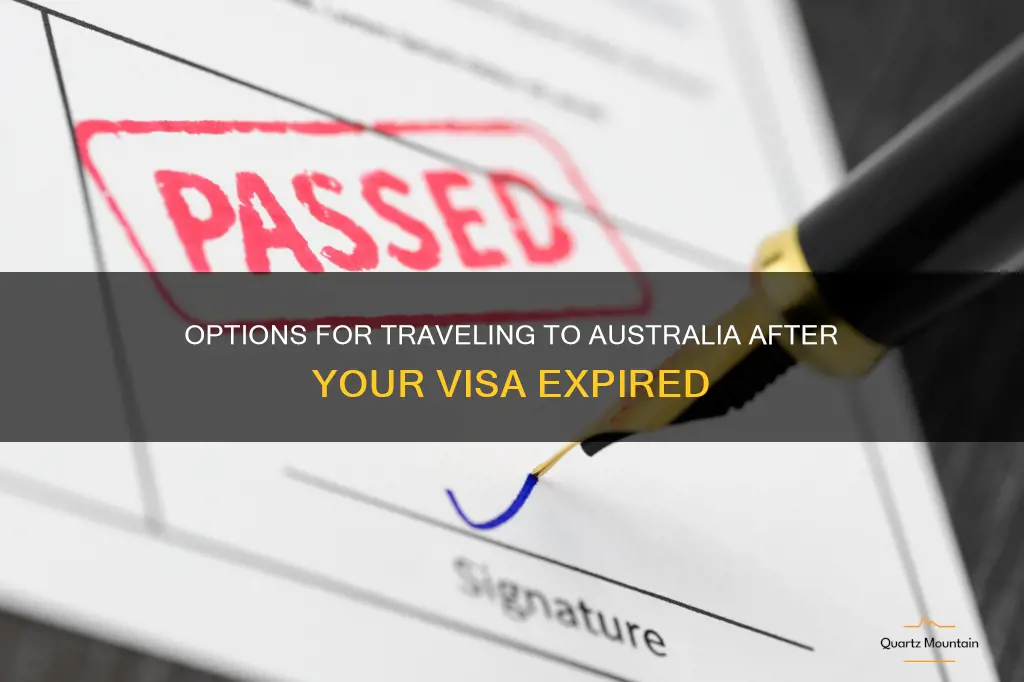
Have you ever wondered what options you have for traveling to Australia after your visa has expired? Whether you're seeking adventure or looking to extend your stay, there are still ways to make your dreams of exploring the land Down Under a reality. From applying for a new visa to exploring alternative routes, this article will guide you through the various options available to continue your Australian adventure even after your visa has expired. So, grab your suitcases and get ready for an exciting journey as we explore the possibilities of traveling to Australia after your visa has expired.
What You'll Learn
Understanding the visa expiration process in australia, exploring options to extend or renew your visa, exploring alternative visa options, seeking assistance from immigration lawyers or agents.

A visa is a crucial document that allows foreign nationals to visit or stay in Australia for a specified period. However, it is essential to understand the visa expiration process and the consequences of overstaying a visa in Australia.
The consequences of overstaying a visa in Australia:
Overstaying your visa can have severe ramifications on your immigration status in Australia. If you remain in the country without a valid visa, you become an unlawful non-citizen, which can have numerous negative consequences. Some of the key consequences of overstaying your visa in Australia are:
- Detention and deportation: Overstaying your visa can result in detention by the Australian Border Force (ABF) and subsequent deportation. The ABF has the authority to detain and remove individuals who have overstayed their visas, which can be a distressing and disruptive experience.
- Inability to work or study: Once your visa has expired, you are no longer authorized to work or study in Australia. This can have significant implications for your career or educational goals, as employers and educational institutions require valid visa details.
- Ineligibility for future visas: Overstaying your visa can have long-term consequences, as it can impact your eligibility for future visas. Immigration authorities may view your previous breach of visa conditions as a negative factor when considering future visa applications.
- Ban on re-entry: Overstaying a visa can result in a ban on re-entry to Australia. The length of the ban depends on the duration of your overstay and the circumstances of your case. A ban can range from 3 years to a permanent ban, effectively preventing you from returning to Australia in the future.
The grace period after visa expiration:
After your visa has expired, there is generally no grace period or leniency provided by the Australian immigration authorities. Once your visa reaches its expiration date, you are expected to leave the country promptly. Failure to do so can lead to the aforementioned consequences.
It is crucial to be aware of your visa's expiration date and plan your departure accordingly. Leaving Australia before your visa expires ensures that you maintain lawful status and avoids any potential penalties or implications associated with overstaying.
Penalties and repercussions for overstaying in Australia:
The penalties for overstaying vary depending on the individual circumstances and the length of the overstay. The Department of Home Affairs takes visa breaches seriously, and the severity of penalties reflects this approach. Some common penalties and repercussions for overstaying in Australia are:
- Detention: The ABF may detain individuals who have overstayed their visas. Detention can occur while the immigration authorities process your removal from Australia.
- Deportation and removal costs: If detained, you may be subject to deportation. In such cases, the Australian government can charge you for the costs associated with your removal, including transportation expenses.
- Visa cancellation: Overstaying a visa can lead to cancellation of your current visa. This can have significant implications for any future visa applications, as previous visa cancellations can be taken into account during the assessment process.
- Ban on re-entry: As mentioned earlier, overstaying your visa can result in a ban on re-entry to Australia. The length of the ban depends on various factors, such as the duration of your overstay and the circumstances of your case.
To avoid the penalties and repercussions of overstaying a visa, it is crucial to understand and abide by the conditions of your visa. If you need to extend your stay in Australia, it is advisable to apply for a visa extension or explore other suitable visa options before your current visa expires.
In conclusion, overstaying a visa in Australia can have severe consequences, including detention, deportation, ineligibility for future visas, and bans on re-entry. It is vital to be aware of your visa's expiration date and plan your departure accordingly. If you need to extend your stay, it is advisable to seek proper guidance and consult with the relevant authorities to ensure you maintain lawful status in the country.
Exploring Puerto Rico: Travel Tips for F1 Visa Holders
You may want to see also
Contacting the Department of Home Affairs:
- When your visa is close to expiring, it is crucial to get in touch with the Department of Home Affairs as soon as possible.
- You can contact them via phone, email, or in person at one of their offices. It is advisable to have all necessary documents ready before contacting them.
- The department will guide you through the process of extending or renewing your visa. They will provide you with an application form and a list of required documents.
- It is important to adhere to the deadlines provided by the department and submit all the required documents accurately.
- Be prepared for potential delays in processing times and ensure to follow up on your application regularly.
Applying for a new visa:
- If your current visa is not eligible for extension or renewal, you may need to apply for a new visa.
- Start by researching suitable visa options based on your circumstances. The Department of Home Affairs website is a great resource for this.
- Once you have identified the visa that best suits your situation, gather all the necessary documents required for the application. Ensure that you meet the eligibility criteria.
- Follow the instructions provided by the Department of Home Affairs for visa application submission. This may include submitting the application online or in person.
- Pay close attention to the visa application fees and make sure to submit the correct payment along with your application.
- Be prepared for possible health and character checks, as these are often part of the visa application process.
- Keep a record of your application details, including any reference numbers or receipts. This will help you track the progress of your application.
Seeking sponsorship or employer sponsorship:
- Another option to explore is seeking sponsorship or employer sponsorship from an Australian employer.
- Start by conducting thorough research and identifying industries or companies that may be open to sponsoring employees.
- Update your resume and tailor it to highlight your relevant skills and experience. This will make you more attractive to potential employers.
- Network with people in your industry and attend job fairs or networking events. Building connections can increase your chances of finding sponsorship opportunities.
- Apply for jobs that offer sponsorship or explicitly mention that they are open to sponsoring foreign employees.
- If you secure a job offer, discuss the possibility of employer sponsorship with your prospective employer.
- If your employer agrees to sponsor you, follow the guidelines and requirements set by the Department of Home Affairs for employer-sponsored visas.
- Keep track of any visa application dates and deadlines and submit all required documents accurately and on time.
In summary, exploring your options to extend or renew your visa involves contacting the Department of Home Affairs, applying for a new visa, or seeking sponsorship or employer sponsorship. It is crucial to follow all instructions provided by the department and ensure that all required documents are submitted accurately and on time. Stay proactive throughout the process and be prepared for potential delays or additional requirements. Good luck!
Understanding the Visa Requirements for Traveling to Norway
When it comes to exploring alternative visa options, there are several paths you can consider depending on your situation and goals. Whether you want to travel and work abroad, pursue further studies, or establish a long-term career in a different country, there are visa options available that can help you achieve your objectives. In this article, we will delve into three popular alternative visa options: working holiday visas, student visas, and sponsored visas or skilled migration.
Working Holiday Visas:
Working holiday visas are an excellent option for young individuals who want to experience living and working in a foreign country while exploring new cultures and gaining international work experience. These visas allow you to work part-time or full-time for a limited period, typically between 6 months to 2 years, depending on the country. They are usually available to citizens of specific countries with bilateral agreements in place.
To apply for a working holiday visa, you will generally need to meet specific criteria, such as being between the ages of 18 and 30 or 35, having sufficient funds to support yourself during your stay, and having health insurance. It's also important to note that each country may have different requirements and limitations, so it's vital to research and understand the specific conditions of the working holiday visa you are interested in.
Student Visas:
If your primary goal is to pursue further studies, obtaining a student visa can provide you with the opportunity to both study and work in another country. Student visas often allow part-time work during the academic year and full-time work during scheduled breaks or vacations.
To apply for a student visa, you will typically need to submit proof of acceptance into a recognized educational institution, evidence of sufficient funds to cover tuition fees and living expenses, and a valid passport. Additionally, some countries may require you to provide additional documents such as medical examinations or language proficiency test results.
Sponsored Visas or Skilled Migration:
If you have specialized skills or qualifications, another attractive alternative visa option is to apply for a sponsored visa or skilled migration program. These visas are often designed to fill specific skill shortages in a country's workforce, and they usually offer more long-term residency opportunities compared to working holiday visas or student visas.
To be eligible for a sponsored visa or skilled migration program, you will generally need to meet certain criteria that may include having a job offer from a qualified employer, meeting specific education and skill requirements, and often evidence of language proficiency. Each country has its own list of eligible occupations and application process, so you must thoroughly research and understand the requirements of your desired destination.
When exploring alternative visa options, it's crucial to carefully consider your goals, circumstances, and the specific requirements of the visa options available. It is also advisable to consult with immigration experts or seek guidance from official government sources to ensure that you have accurate and up-to-date information regarding your visa application. With the right visa, you can embark on a new adventure, gain valuable experiences, and potentially create a pathway to a successful international career.
Exploring Boundaries: Unlocking the Possibilities of Travel with a Schengen Visa
Consulting with an immigration lawyer is an important first step for many individuals. Immigration lawyers are professionals who specialize in immigration law and can provide invaluable advice and guidance throughout the visa application process. Here are some key reasons why consulting with an immigration lawyer is beneficial:
- Expert Legal Advice: Immigration lawyers are well-versed in immigration law and are up-to-date with the latest legal developments. They can provide accurate and reliable advice tailored to your specific circumstances. Whether you have a straightforward case or a complex situation, an immigration lawyer can analyze your case and provide guidance on the best course of action.
- Application Assistance: Filling out visa applications can be confusing and time-consuming. Immigration lawyers can help you navigate through the application process, ensuring that all documents are correctly submitted and that you meet all the requirements. They can also help you prepare for any interviews or hearings that may be required.
- Problem-solving: If you encounter any issues or complications during the immigration process, an immigration lawyer can help identify the problem and find a solution. They can represent you in negotiations with immigration authorities and provide the necessary legal arguments to support your case.
Engaging the services of a registered migration agent is another option for individuals seeking assistance with immigration matters. Registered migration agents are professionals who are authorized to provide immigration advice and assistance. Here are some reasons why engaging a registered migration agent can be beneficial:
- Knowledge and Experience: Registered migration agents have completed extensive training and are registered with the appropriate regulatory body. They have a deep understanding of immigration law and the application processes. They can provide reliable advice and assist you in preparing and lodging your visa application.
- Compliance with Regulations: Immigration laws are constantly changing, and it can be challenging to keep up with the latest requirements. Registered migration agents stay informed about any changes to the immigration regulations and can ensure that your application is fully compliant.
- Representation: Registered migration agents can represent you in dealings with immigration authorities. They can communicate with immigration officers on your behalf and handle any inquiries or requests for further information. This can save you time and effort and ensure that your case is presented in the best possible light.
Understanding the legal processes and requirements involved in immigration is crucial for success. Immigration lawyers and registered migration agents can provide you with the knowledge and guidance needed to navigate through the complex immigration system. They can ensure that you meet all the necessary requirements and increase your chances of a successful outcome. Remember to choose a reputable professional with experience in immigration law to ensure the best possible outcome for your case.
Traveling with an R-1 Visa: Can I Travel with an I-485 Pending?
Frequently asked questions.
If your visa has expired, you will need to apply for a new visa in order to travel to Australia legally. You can do this by submitting a new visa application through the Department of Home Affairs website. Make sure to check the specific requirements and eligibility criteria for the visa you are applying for.
No, if your previous visa has expired, you cannot enter Australia on a tourist visa. It is important to have a valid visa before traveling to Australia. If your previous visa has expired, you will need to apply for a new visa before you can enter the country.
Traveling to Australia without a valid visa is illegal and can have serious consequences. If you are caught without a valid visa, you may be detained, deported, and banned from entering Australia for a certain period of time. It is always important to make sure you have a valid visa before traveling to any country.

- Guilia Velez Author

- Viajera Compulsiva Author Editor Reviewer
It is awesome. Thank you for your feedback!
We are sorry. Plesae let us know what went wrong?
We will update our content. Thank you for your feedback!
Leave a comment
Travel photos, related posts.
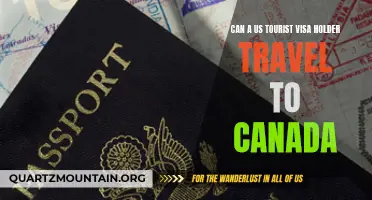
Exploring Canada: Can US Tourist Visa Holders Travel North of the Border?
- Mar 15, 2024
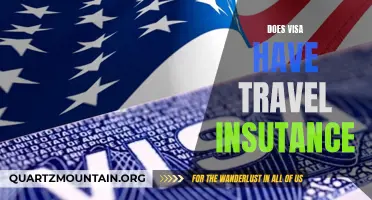
Does Visa Offer Travel Insurance?
- Apr 12, 2024
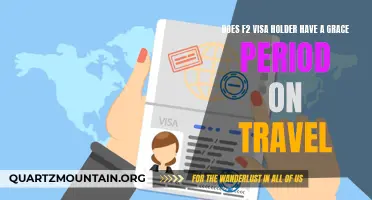
Does the F2 Visa Holder Have a Grace Period on Travel: Everything You Need to Know
- Apr 09, 2024
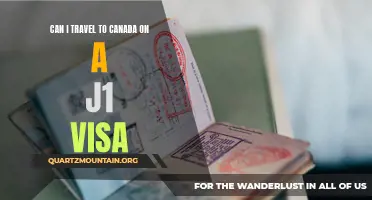
Exploring Canadian Adventures: Can I Travel to Canada on a J1 Visa?
- Mar 19, 2024
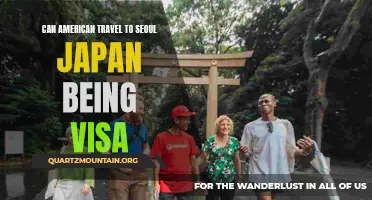
Exploring Seoul: A Guide for American Travelers to Japan Visa-Free
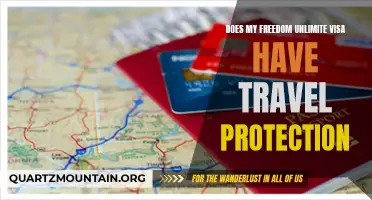
Understanding the Travel Protection Benefits of the Unlimite Visa
- Apr 10, 2024
- International edition
- Australia edition
- Europe edition

New Zealand tightens visa rules after migration hits ‘unsustainable’ levels
Net migration to New Zealand hit a near record high in 2023 after a new temporary work visa was introduced after the pandemic
New Zealand will tighten its visa rules for some migrants as the coalition government moves to overhaul the immigration system it says has led to “unsustainable” levels of migration.
Last year, annual net migration to New Zealand hit a near record high of more than 173,000 non-New Zealand citizens in the year to December, Stats NZ reported .
Immigration minister Erica Stanford announced on Sunday changes to the accredited employer worker visa (AEWV), the main temporary work visa, which was introduced in mid-2022 to help fill workforce shortages after the pandemic.
The government’s changes to the scheme would include introducing English-language requirements for low-skilled jobs and setting a minimum skills and work experience threshold for most employer work visas. The maximum continuous stay for most low-skilled roles will also be reduced to three years from five years.
The changes would be immediate, she said.
“The government is focused on attracting and retaining the highly skilled migrants such as secondary teachers, where there is a skill shortage,” Stanford said in a statement. “At the same time we need to ensure that New Zealanders are put to the front of the line for jobs where there are no skills shortages.”
New Zealand, which has a population of about 5.1 million, has seen a rapid growth in migrant numbers since the end of the pandemic, raising concerns last year that it was fanning inflation. A Reserve Bank-commissioned report released last month into the possible links between migration levels and inflation was inconclusive.
Stanford said the changes would also reduce the vulnerability of migrants to exploitation.
In February, the Public Service Commission released its review of the AEWV scheme, which former immigration minister Andrew Little ordered after complaints of exploitation. The commission found that a small number of “unscrupulous employers” targeted the scheme and took payments from people wanting to move to New Zealand.
“By having an English-language requirement migrants will be better able to understand their rights or raise concerns about an employer early,” Stanford said.
The government had scrapped plans to add 11 new roles to the Green List – a list of highly skilled roles that New Zealand is struggling to fill – including welders, and fitters and turners.
Neighbouring Australia, which has also seen a big increase in migration, has said it would halve its migrant intake over the next two years.
- New Zealand
- Asia Pacific
Most viewed

IMAGES
VIDEO
COMMENTS
The Department of Home Affairs acknowledges the Traditional Custodians of Country throughout Australia and their continuing connection to land, sea and community. We pay our respects to all Aboriginal and Torres Strait Islander peoples, their cultures and to their elders past, present and emerging. For tourists, business visitors or to visit ...
The application process may differ depending on which visa you need. You can only apply for the Electronic Travel Authority visa (subclass 601) through the Australian ETA app. A step-by-step guide on how to apply is located here. For other visas, you can apply online by creating an ImmiAccount and completing the application process. Be sure to submit your application well in advance of your ...
Latest news. For the latest immigration and citizenship news, see News - Archive. Electronic Travel Authority (ETA) From 6 April 2022, all ETA-eligible passport holders can ap ply for an ETA using the Australian ETA app. For more information, see our Step by step guide.. If you are unable to use the app, you can apply online through ImmiAccount for another visa that suits your needs.
Visas to visit Australia. Whether you are visiting Australia for less than 72 hours or planning on a stay of several years you must have a valid Australian visa. A visa is a form of permission for a non-citizen to enter, transit or remain in a particular country. Information on visas to Australia can be found at the Department of Home Affairs.
A comprehensive guide to Australia Visitor Visa (Subclass 600, Tourist Stream). Details on documents required, biometric appointment and application process. ... Australian immigration reports that 50% of applications are processed in 7 days and 90% are processed in 21 days. These periods start after you submit your biometrics (if required).
The documents you must attach to your Australian tourist visa application include: Your passport. A copy of your passport's identity page. The Visitor Visa Subclass 600 Form. A recent picture of yourself. It must have a white background and you must be clearly and fully visible.
There is no VISA-FREE access to Australia, everyone must hold either an ETA, eVisitor or Visitor visa. ETA is available to 33 nationalities, costs 20 AUD, approved immediately. eVisitor visa is available to 36 nationalities, free of cost and approved within a day. Visitor visa is available to all nationalities, costs 190 AUD, processing takes 1 ...
Australia enjoys some of the best health standards in the world. To maintain these standards, most visa applicants are required to meet certain minimum health standards in order to be granted a visa. We refer to this as meeting 'the health requirement'. For information on meeting the health requirement visit the Department of Home Affairs website.
Step 1: Select whether you need a Tourist ETA or a Business Visitor ETA, and certify that you are currently located outside Australia. Step 2: Enter your personal details, whether you have an alias, answer a question about your criminal record and enter your passport information.
All non-Australian citizens traveling to Australia require a visa or visas waiver issued by the Australian Government. For information on immigration requirements for Australia, please refer to the information on the Australian Department of Home Affairs website. If you have experienced issues applying for an Australian visa, or wish to follow up on the status of an application, you will need ...
The main types of tourist visas available are: Visitor visa - Subclass 600: this visa has several streams under which you could apply, and there are options to apply from outside or inside Australia. This visa can also be granted for a period longer than 3 months. Streams include the tourist stream, sponsored family stream, business visitor ...
From 1 July 2023, several visa changes and opportunities will come into effect. Here's what you need to know. New visa pathways start on 1 July 2023. Source: SBS News / Getty. Australia's new ...
Here are some of the most common types of Australian visas: Tourist Visa. If you're planning a short-term visit for holidays, sightseeing, or visiting friends and family, a tourist visa (subclass 600) is the way to go. This visa allows you to stay in Australia for up to three, six, or twelve months, depending on your circumstances. Skilled Visa
The Work and Holiday (subclass 462) visa allows young adults to have a 12-month holiday in Australia, during which they can undertake short-term work and study. The Department of Home Affairs has opened 2,500 Work and Holiday visas for the program year (1 July to 30 June) for eligible Singapore passport holders.
Visit the Immigration and citizenship website, and click the Ask a question button to get started. Global Service Centre If you require additional information, you may telephone the Global Service Centre on +61 2 6196 0196, Monday to Friday, from 9:00am to 5:00pm your local time.
The invitation letter by a family member or friend is to help vouch for you and your genuine intent as a tourist in Australia. The Department of Home Affairs wants to see the invitation letter communicate¹: The friend or family member's relationship to you. The reason you are visiting. How long you are staying.
The grace period after visa expiration: After your visa has expired, there is generally no grace period or leniency provided by the Australian immigration authorities. Once your visa reaches its expiration date, you are expected to leave the country promptly. Failure to do so can lead to the aforementioned consequences.
Immigration minister Erica Stanford announced on Sunday changes to the accredited employer worker visa (AEWV), the main temporary work visa, which was introduced in mid-2022 to help fill workforce ...
11 likes, 0 comments - fenix_immigration_servicesJuly 12, 2023 on : "Contact or visit us to know more! #feniximmigration #ielts #pte #studyabroad #visa #canada # ...